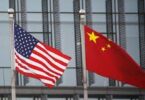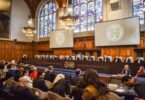Max Nisen
During a press briefing Wednesday evening on the coronavirus outbreak, President Donald Trump claimed the US is “totally prepared” to respond to a disease that is spreading to new countries seemingly every day.
That’s a bold assertion that will be tested immediately, and it may come back to haunt the administration. Indeed, the first significant challenge came shortly after the briefing as the Centers for Disease Control disclosed America’s first infection not tied to travel in China or another known case. If there’s one such case, there are likely to be more.
Against that backdrop, the president’s instinct to downplay the threat — even if the experts with him were more sobering — and his willingness to exchange potshots with political rivals such as Democratic House Speaker Nancy Pelosi are especially troublesome. He at least acknowledged at the briefing that the risk of the virus could escalate, which is an improvement, and his decision to put Vice President Mike Pence in charge of the response may make things less chaotic. But modestly improved rhetoric and a new virus czar are a pretty long way off from total preparation. The news of a US coronavirus case that isn’t tied to China or another known case is likely to deal a further blow to equities in spite of President Trump’s efforts to calm the country
Trump and his assembled officials did some things right at the briefing. They encouraged people to take steps that might prevent the spread of the virus, such as washing hands and staying home when ill. These efforts may not seem important, but they genuinely do reduce the spread of viruses, and the fact that the president encouraged those measures is significant. The possibility of quarantines was acknowledged, as was the need to financially and logistically support state and local responses to any uptick in infections. But specifics on when quarantines might be needed, the reasons White House and Congressional estimates of needed emergency funding are so far apart, and the possible need for further travel bans were all conspicuously absent. If Pence wants to prove he’s up to the job of leading the response, providing more detail on these crucial issues should be a priority. Meanwhile, even as Trump described the potential breadth of actions underway, he appeared to underplay the urgency. “We do have plans on a much larger scale,” he said. “I don’t think we’ll need it.”
Trump’s seeming preference to minimize the threat of the virus also reared its head with his repeated emphasis that there were just 15 confirmed cases in the US, not counting repatriated Americans. He attributed this to his rapid decision to ban travelers from China. But another culprit is that America has been extremely slow to test broadly for the disease due to limited capacity and narrow CDC guidelines. As the recently disclosed mystery case makes it clear, the administration won’t truly know if the virus is spreading broadly or be able to respond appropriately until America tests far more broadly.
Wednesday’s press conference was the president’s attempt to calm markets and the country, but the virus is unlikely to cooperate. The administration will have to replace words with palpable action.






